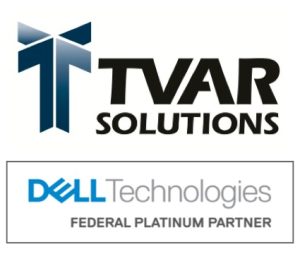Legacy IT looks different from agency to agency. Some organizations haven’t fully embraced the cloud; others still run key operations on Windows XP. But all organizations in need of modern technology have challenges to overcome.
According to Sam O’Daniel, Vice President of Civilian Sales with TVAR Solutions, which works with IT partners such as Dell Technologies to help agencies meet their transformation needs, those obstacles include antiquated workflows and procurement processes.
“It’s key for government agencies to understand that you could have the greatest technologies in the world, and they can help you change your agency’s direction and capabilities in a heartbeat, but you are never going to be able to adopt those technologies without modernizing the processes and the legacy policies that have been in place for decades,” he said.
Scale Up, Scale Down
O’Daniel describes legacy IT as “a byproduct of the legacy workflows and policies that are in place today that essentially inhibit modernization and transformation.” To implement new IT solutions and be more agile, organizations must welcome automation and other reforms and understand what their people and missions need.
And “from a scalability perspective, [organizations must] be able to leverage resources on demand as needed, going up [and scaling] down to… control and manage costs,” he said. In the future, as agencies continue to evaluate what they need and when they need it, we’ll see a “massive push and greater rate of adoption of consumable-as-a-service [offerings], not just technologies, but overall services in general,” he predicted.
Navigating Procurement
Government IT projects that cost millions of dollars and extend for years are less popular now that on-demand, cloud-based alternatives exist.
But reform would be much easier if procurement were less archaic. Months often pass between when an agency realizes it needs something and when it gets a cost estimate, budgets for the update and ultimately receives it. “Government agency budget cycles [and] procurement [requirements]…do not allow agencies to invest the necessary capital in technologies and services to be able to support [agency] efforts as they transform and modernize at scale and speed,” O’Daniel said. “The government just doesn’t fund themselves that way.”
So, one benefit of scalable as-a-service options is that they bypass rigid procurement rules. They’re governed by multiyear service agreements that more reliably and quickly help organizations operate.
How TVAR Solutions Helps
TVAR Solutions helps federal agencies create a multi-phased transformation roadmap, including one for a large agency engaged in a massive consolidation since 2018. Multiple organizations within the agency, each with their own individual controls, CIOs and IT budgets, are merging into a centralized shared-service organization, O’Daniel said.
His company is aggregating and standardizing the software, hardware and other technology and now is building out a “truly consumable as-a- service infrastructure,” he said. The project is moving into Phase 5.
When consolidation began, the agency didn’t understand what it needed and what transformation would look like — but fortunately, O’Daniel said, TVAR Solutions did.
This article appears in our guide, “How to be a Pivot-Ready Organization.” For more about “everything as a service” and how it can help your agency, download it here:






Leave a Reply
You must be logged in to post a comment.